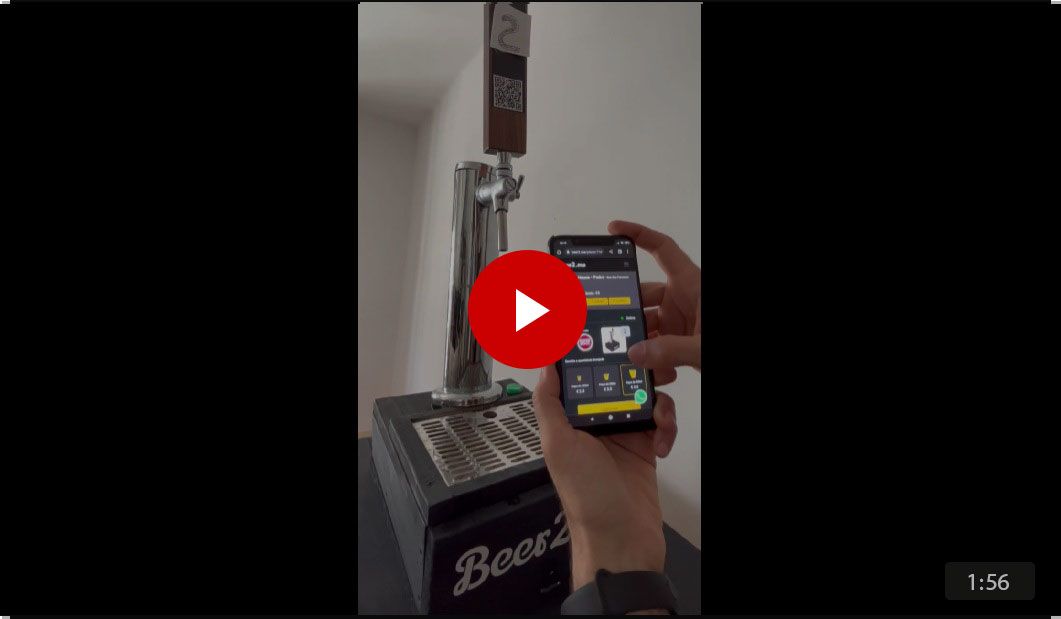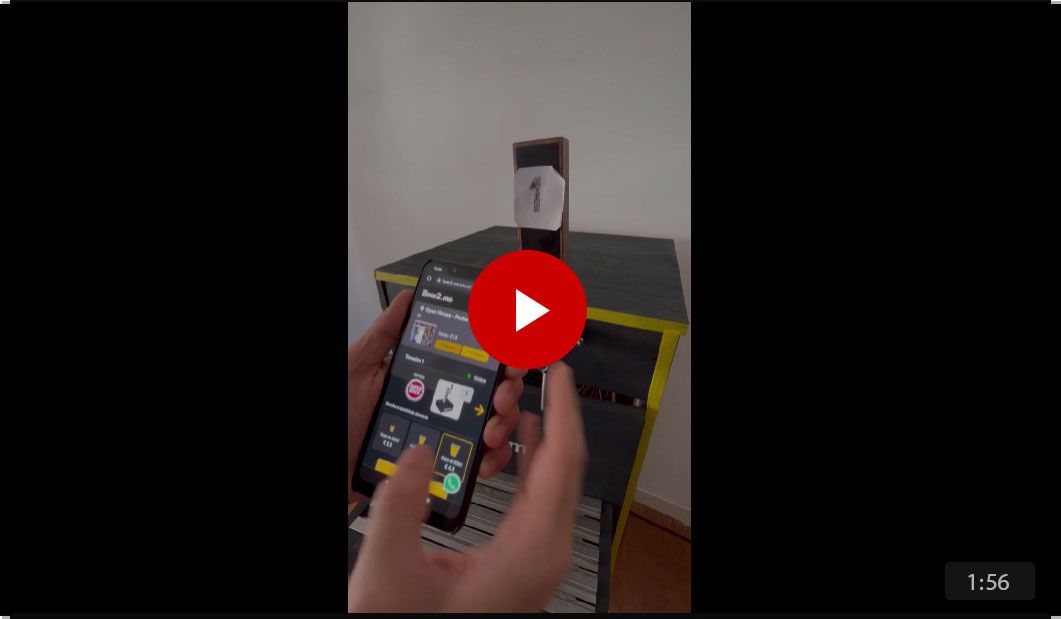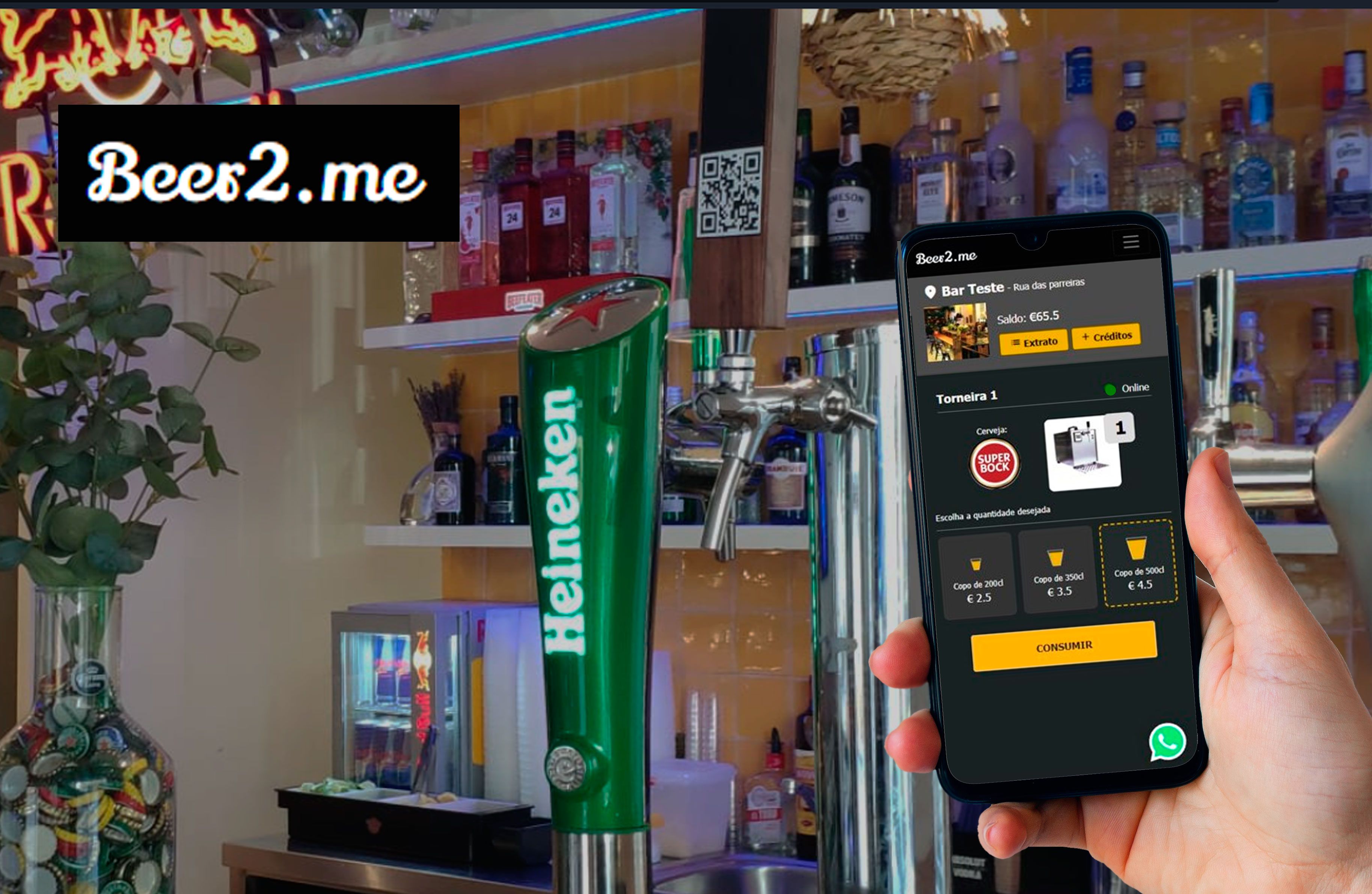
Complete development of beer2.me
beer2.me is an one-man project that involves hardware and software to automate the sale of beers.
The project
The beer. my project originated from the idea of eliminating queues for purchasing beer at parties and bars in Lisbon. The decision to move forward with its development was driven by a desire to acquire new knowledge, especially in software and hardware development.
The idea is simple: Bar or party customers can use their mobile phones to buy bar credits using credit cards or cash and use them to dispense beer from the taps.
My role:
In this personal project, I ended up doing everything. In addition to being the designer, I acted as both a front-end and back-end developer. I took care of all the server infrastructure, built the machines, and handled all the hardware installations and support structures made of iron and wood.
Initial research and opportunity identification
I began the project with a benchmarking research. Through it, I could perceive that there were already other similar projects, both at the experimental level and as established businesses in other parts of the world.
Next, I started researching how a beer machine worked and the internal processes of a bar, by reading articles, posts, and watching videos on the internet. After gaining a basic understanding, I initiated observation studies at some bars in the city, focusing on internal processes, and also conducted interviews with some employees and local owners.
During the interviews, I identified that not all bars would be willing to adopt this type of service, as some highly valued human interaction. Additionally, there were concerns regarding hygiene, public acceptance, machine management complexity, and even doubts about the speed this could bring to customer service.
On the other hand, some bar owners showed support for the idea of having an automated system, but were worried about the high investment costs needed for implementation. There were issues that, if resolved effectively, could justify a potential adoption of the self-service system:
-
Queues annoyed some customers, leading them to buy from competitors.
-
The biggest cost for bars was their employees.
-
There was constant beer waste, during barrel changes, consumption by employees, and donations to friends.
-
Bar owners lacked strict control over their sales and were missing management data such as sales metrics, recurrence, churn, customer profiles, etc.
-
The beer drip trays were being replaced by employees 3 or 4 times per night.
-
Self-service technology was not accessible to bars in Lisbon. The only bar that had it had contracted a Brazilian company, and the investment seemed to be very high.
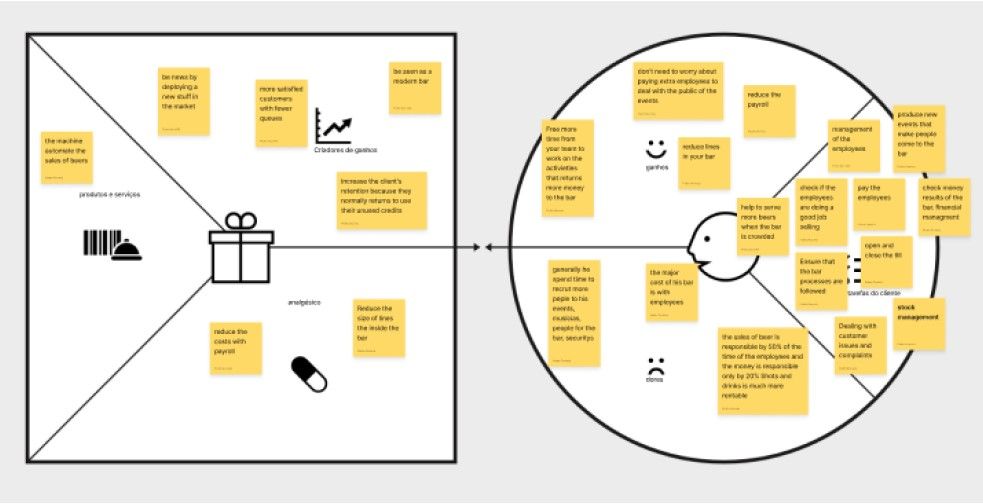
During that time, I created some Personas and also a Value Proposition Canvas to help me empathize with the bar owners. This helped me understand their pain points and needs. It also helped me generate questions for the subsequent interviews.
The Prototype
Initially, I considered the possibility of validating the business before development through prototyping using an explanatory video or something similar to confirm customer interest. However, my desire to learn more about development and hardware, along with indications of success in other parts of the world, motivated me to continue. I believed in the project's potential and proceeded without formal prior validation.
I created a low-fidelity interface prototype to think about how the MVP could work in the simplest way possible in a fully web-based system.
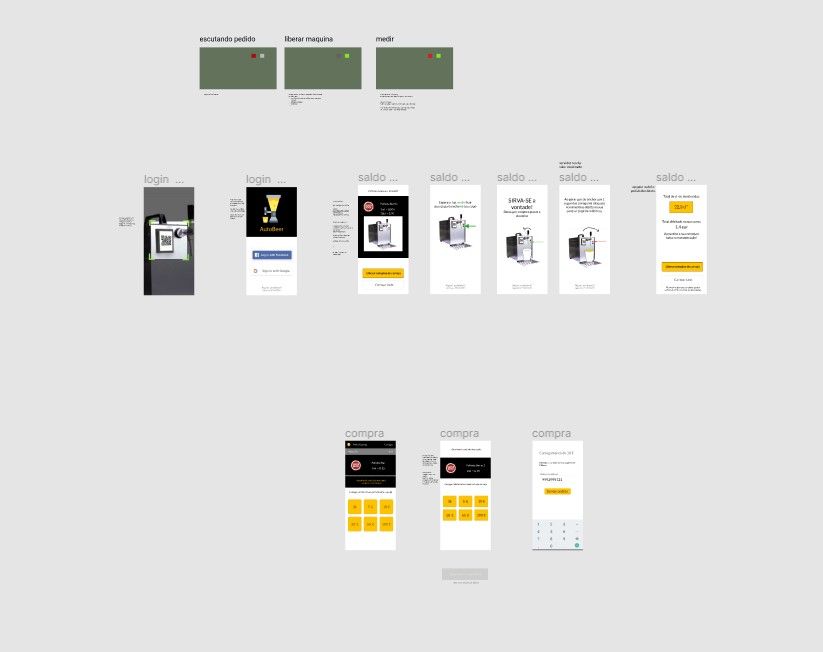
MVP Development
I started by researching existing solutions to determine which technologies and knowledge I would need to learn to implement the project. I mapped out a study plan, and the first few months were dedicated to studying development, purchasing, and testing hardware equipment.
I primarily used Node.js + Express and a MongoDB database to make the machine work and receive orders.
I redesigned the interface and create a high-fidelity prototype in Figma:
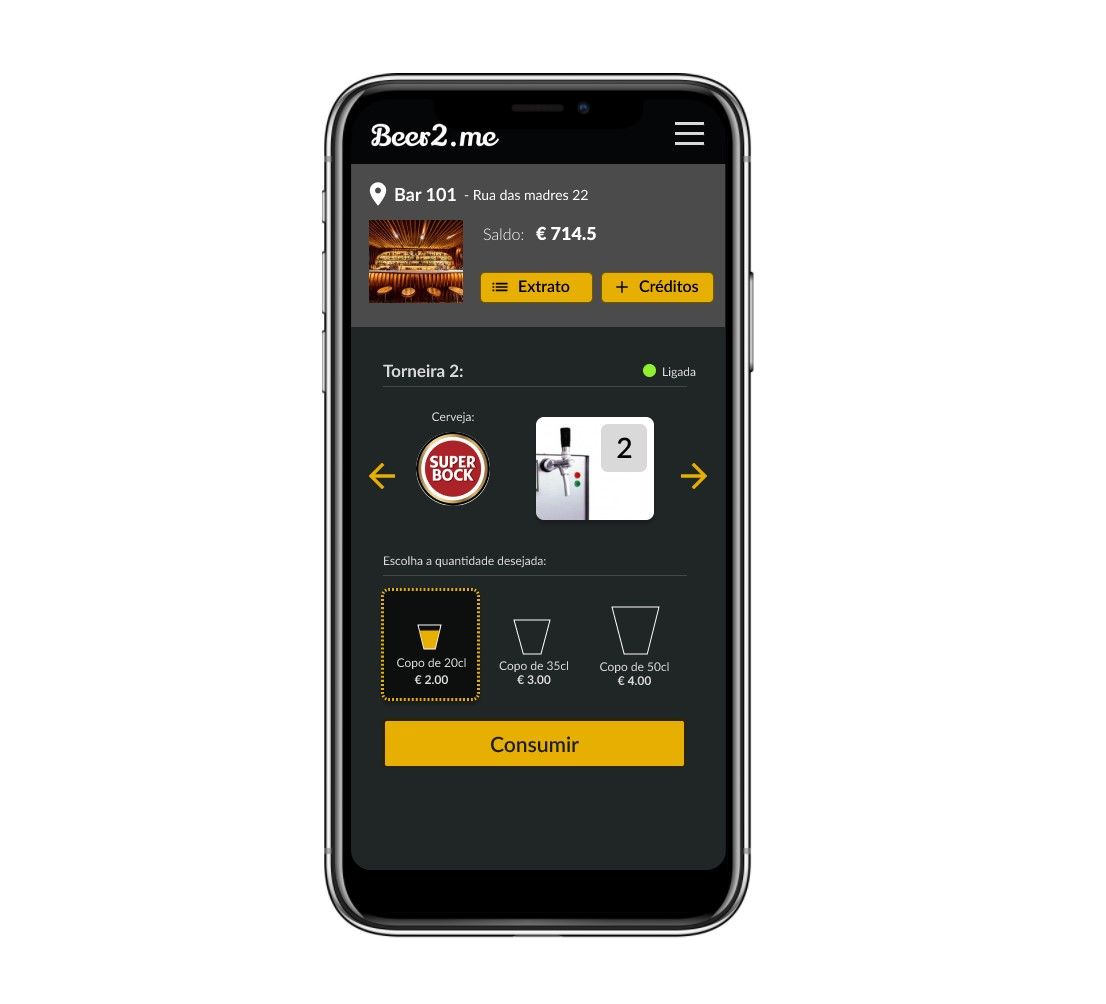
In the development of the web platform, I employed an MVC architecture, crafting the interface using EJS, HTML, and CSS. Additionally, I constructed a RESTful API to provide a React JS interface for sales metric analysis.
Several technical challenges arose throughout the project, such as:
-
Determining the dynamic IP addresses of the machines.
-
Ensuring multiple layers of security validations for orders, ensuring that taps were only released by real users with credits.
-
Resolving issues related to automatic machine configuration during boot.
-
Enhancing equipment security against attacks, such as using reverse proxies and HTTPS for service communications, encrypting exchanged data, and implementing firewalls with database blocking, among other measures.
-
Integrating with payment gateways to enable online credit purchases.
For the physical assembly of the machine, I used wood and iron, which required me to purchase various tools and also learn a bit about carpentry and beer equipment assembly.
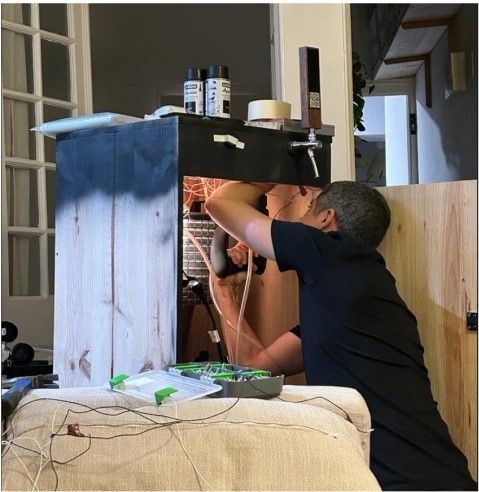
In the end, I even created a waste evacuation system to automatically remove beer residue from the drip trays, further increasing the machine's autonomy.
User Testing
The tests involved bar patrons using the product without external assistance while being observed. During a party, the machine was made available without any instructions on how to dispense beer. As expected, the tests identified several possible usability improvements for the machine and the system, but there were no critical issues that prevented people from using it.
With all these problems identified in a backlog, I tackled the most critical ones and implemented solutions.
During this process, I ended up creating a Customer Journey Map, which helped me identify additional opportunities for improvement in the machine's usage at a bar. These insights will be considered for future developments.
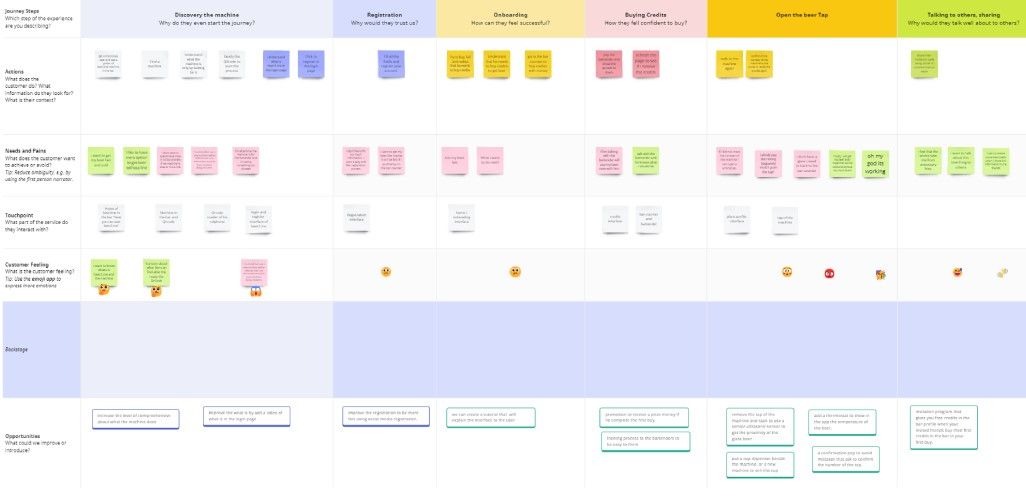
Validation
At the time of writing this article, the business validation process is underway, and I have been negotiating with some bars to have the machine used in the market on an experimental basis.
I have created marketing materials to help capture leads, and I am currently working on building a website to attract more leads interested in having one of my machines.
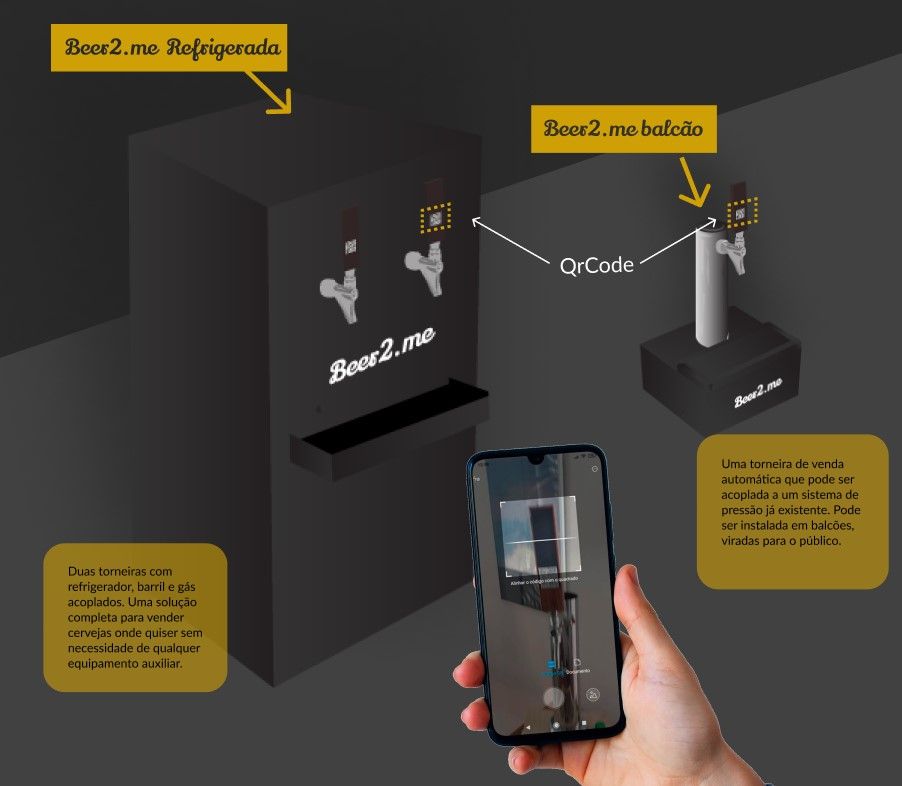
In parallel, I have been working on resource acquisition and potential partnerships.
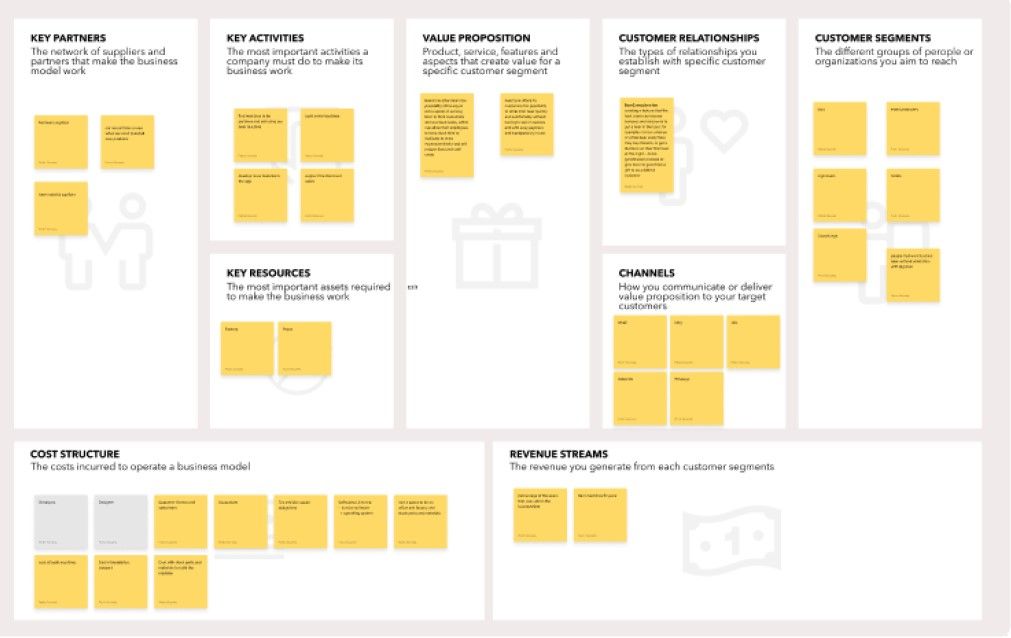
Learnings
This project has been an incredible learning opportunity, both in software development and the maker world. It felt like stepping into a new realm of knowledge. I had to start from the basics of backend development, understand object-oriented programming, design patterns, the deployment process, and security techniques with their various tools.
Moreover, I had the chance to work with electronics, testing various sensors, and honing my skills in carpentry and manual work. Even though it is still a work in progress, I consider this one of the most enriching projects I have undertaken, as it has provided significant growth in various areas of knowledge.
I believe that this project has made me a more well-rounded and versatile professional. I have gained a comprehensive understanding of hardware and software development, which not only helps me become a better designer but also enables me to lead a development team and participate in more in-depth technical discussions.
